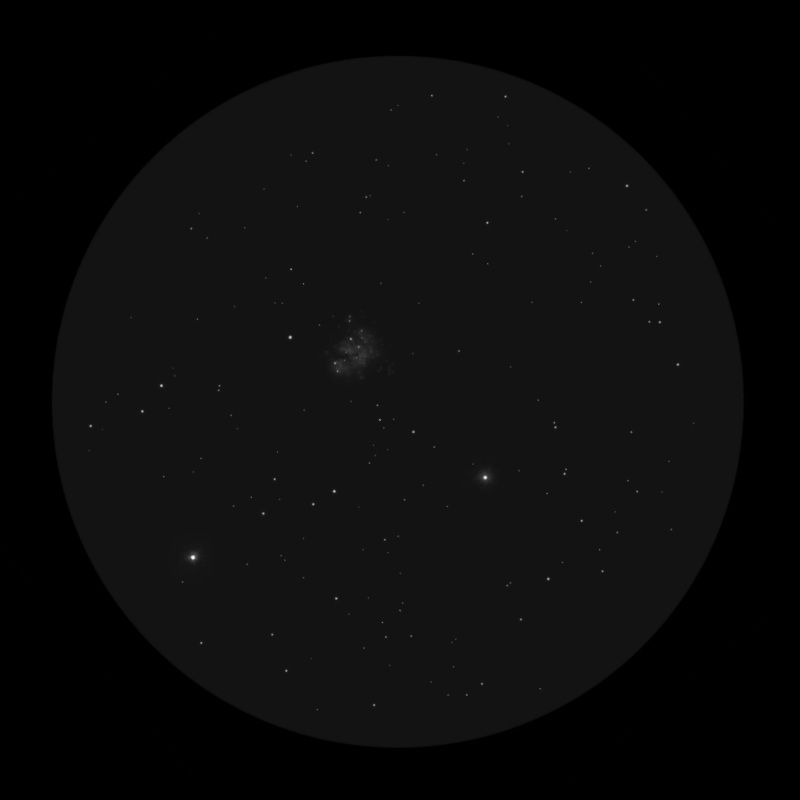M35
Sketch and Commentary by Rony De Laet
While Gemini is far past its optimum appearance in the sky, the view of M35 is still very exciting in a pair of binoculars.
The open cluster M35 was probably discovered in 1745 by Philippe Loys de Chéseaux. In 1764 Charles Messier added the object in his famous catalog with the entry number 35. The cluster has once been called the Shoe-Buckle Cluster for an evident reason. This misty patch can easily be found at Castors foot, between Eta and 1 Geminorum. At a distance of 2.700 l-y, M35 is visible as a mottled, misty patch to the naked eye under very dark skies. It shines with a total magnitude of 5.1.
M35 is a very rewarding object in small binoculars. Once Eta Geminorum is centered in the field of view, the sparkling cluster is easily visible near the western border of the field. I could partially resolve the cluster with my 8×56. Four stars were visible with direct vision, while a total of 14 stars could be picked out of the glow with averted vision. A few dark lanes were visible as well. Unfortunately, the sky was not very clear during the observation and M35 was approaching the north-western horizon. I saw a brightening near the position of NGC 2158, but I could not confirm its presence. M35 is certainly an object to return to next year, when it appears again near zenith. The bright star near the bottom left corner of the sketch is Eta Geminorum.
Observing data:
Date : April 7, 2008
Time : around 20.30UT
Binoculars : Bresser 8×56
FOV: 5,9°
Filter : none
Mount : Trico Machine Sky Window
Seeing : 2,5/5
Transp. : 2,5/5
Nelm : 4,8
Sketch Orientation : N up, W right.
Digital sketch made with PhotoPaint, based on a raw pencil sketch.


Rony,
With modest equipment you have been able to produce a beyond beautiful, realistic and wide field of view of the magnificent M-35 open cluster. This is a great sketch!
Frank